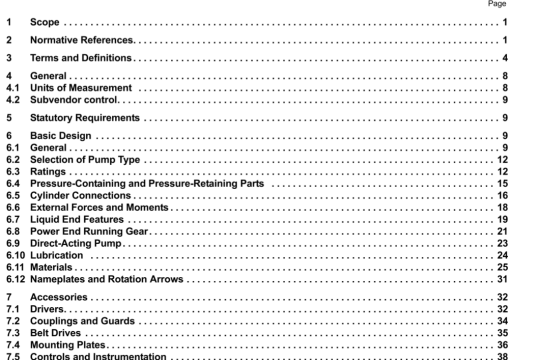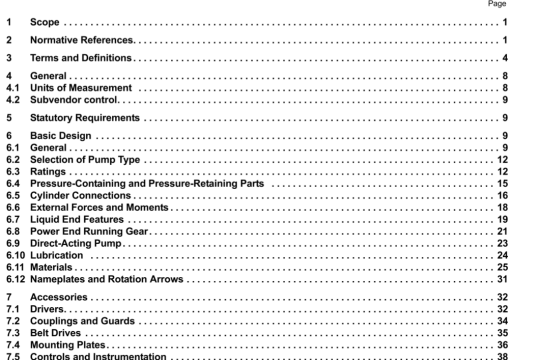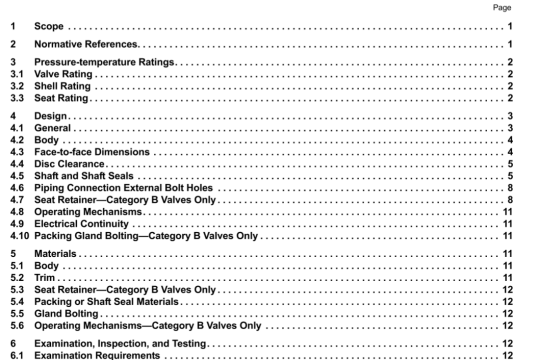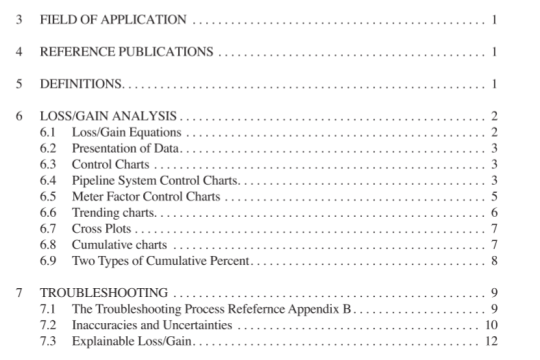API RP 8B:2002 pdf download
API RP 8B:2002 pdf download.Recommended Practice for Procedures for lnspections,Maintenance, Repair and Remanufacture of Hoisting Equipment.
4.1.2.1 User/owner and manufacturer joint procedure development
The user/owner and manufacturer should jointly develop and update inspection, maintenance, repair and remanufacture procedures consistent with equipment application, loading, work environment, usage, and operational conditions.
These factors may change as a result of new technology, product improvements or fundamental changes in service conditions.
4.1.2.2 User/owner procedure development
If the manufacturer of the equipment no longer exists or is unable for any reason to provide suitable recommendations, the user/owner shall develop inspection, maintenance, repair and remanufacture procedures consistent with widely-accepted lndustiy practices.
4.1.2.3 Parts and tooling
NDT, maintenance, and dismantling equipment shall be propedy selected and adapted to the parts to be inspected
and maintained.
4.2 Personnel qualification
4.2.1 NDT peesonnel qualification levels
4.2.1.1 QualifIcation
Inspectors shall be aware of the type of equipment to be evaluated and the NDT methods to apply. The users/owners shall verify that the NDT inspector has the following information:
– assembly drawings and drawings identifying critical areas;
— rejection critena.
In addition, the userslowners may provide the history of grinding or remanufacture, if available.
In the absence of critical area drawings, all areas of primaty-load-canying components shall be considered critical. These data shaM be used by the inspector to adapt the inspection procedure.
4.2.1.2 Certification
The NDT inspector shall be certified according to ISO 9712 or by other recognized NDT certification programmes
or standards.
4.2.2 Welding personnel qualification levels
Welders shall be qualified to a recognized standard.
5 Inspection and maintenance
5.1 General
5.1.1 CrIteria
Inspection and maintenance are closely linked. Inspection and maintenance actions may be initiated based on, but not limited to, one or more of the following criteria:
– specific time intervals; measurable wear lWnlts;
– load cyde accumulation;
– non-performance of equipment; environment;
experience (story);
– regulatory requirements
5.1.2 Safety considerations
Operators shall review safety considerations app’icable to the site where the maintenance activity Is performed.
5.2 MaIntenance
5.2.1 General
Maintenance of equipment consists of actions such as adjustments, cleaning, lubrication, and replacement of expendable parts. The complexity of these activities and the safety risks involved shall be considered in the assignment of appropriate resources such as facilities, equipment and qualified personnel.
5.2.2 Procedures
In addition to the pi’ocedures developed in accordance with 4.1, the manufacturer should define any speaal tools, materials, measuring and inspection equipment, and personnel qualifications necessary to perform the maintenance. The manufacturer should also specify those procedures that should be performed solely by the manufacturer, either within the manufacture?s facility or within another approved facility.
5.3 Inspection
5.3.1 General
The existence of cracks can indicate severe detenoration and impending failure. Their detection, identification and evaluation require accurate Inspection methods.
Prompt attention is then required either to remove the equipment from service immediately or to provide appropnate service and/or repair.
Caution shall be exercised to take into account the increased susceptibility to brittle fracture of many steels when operating at low temperatures.




